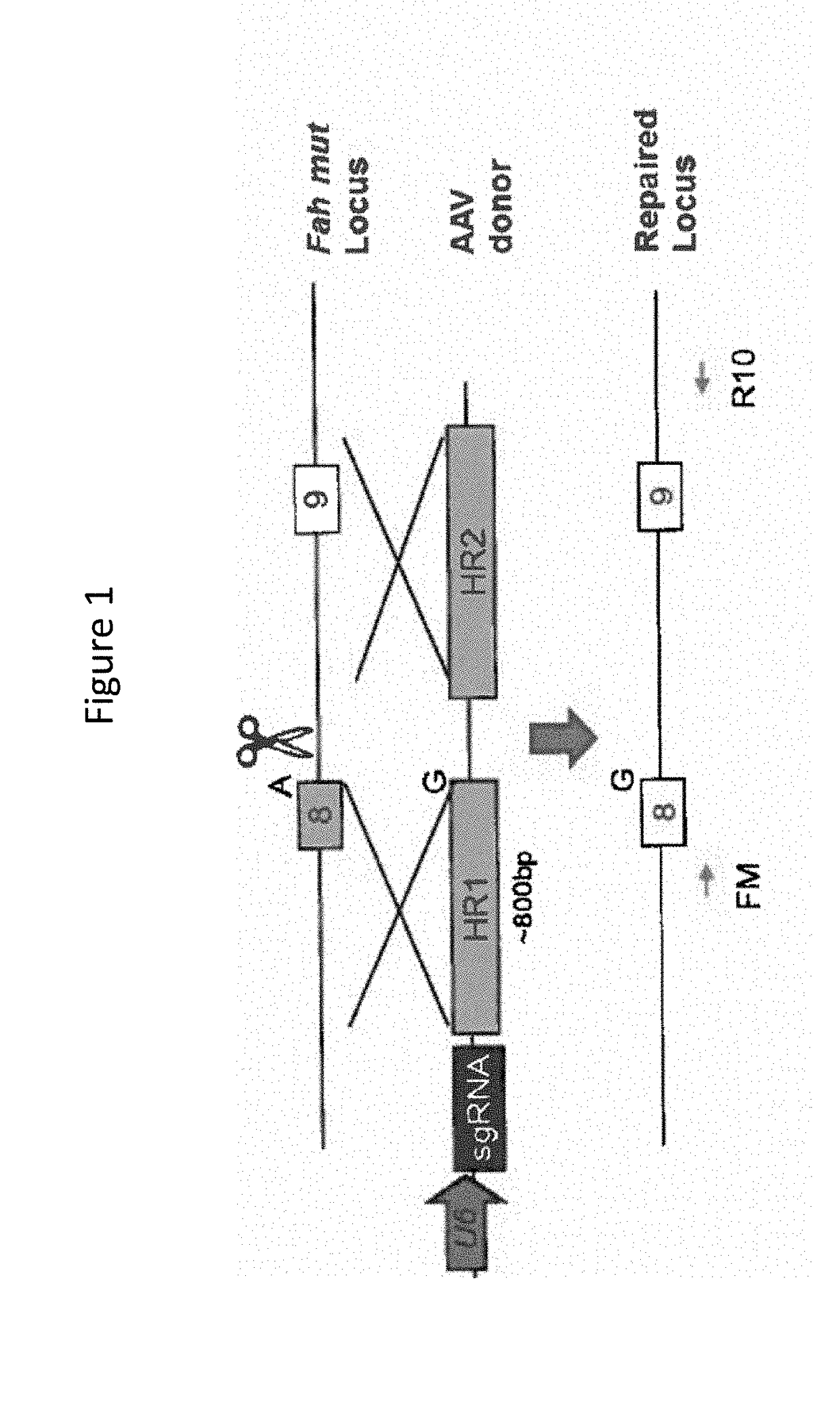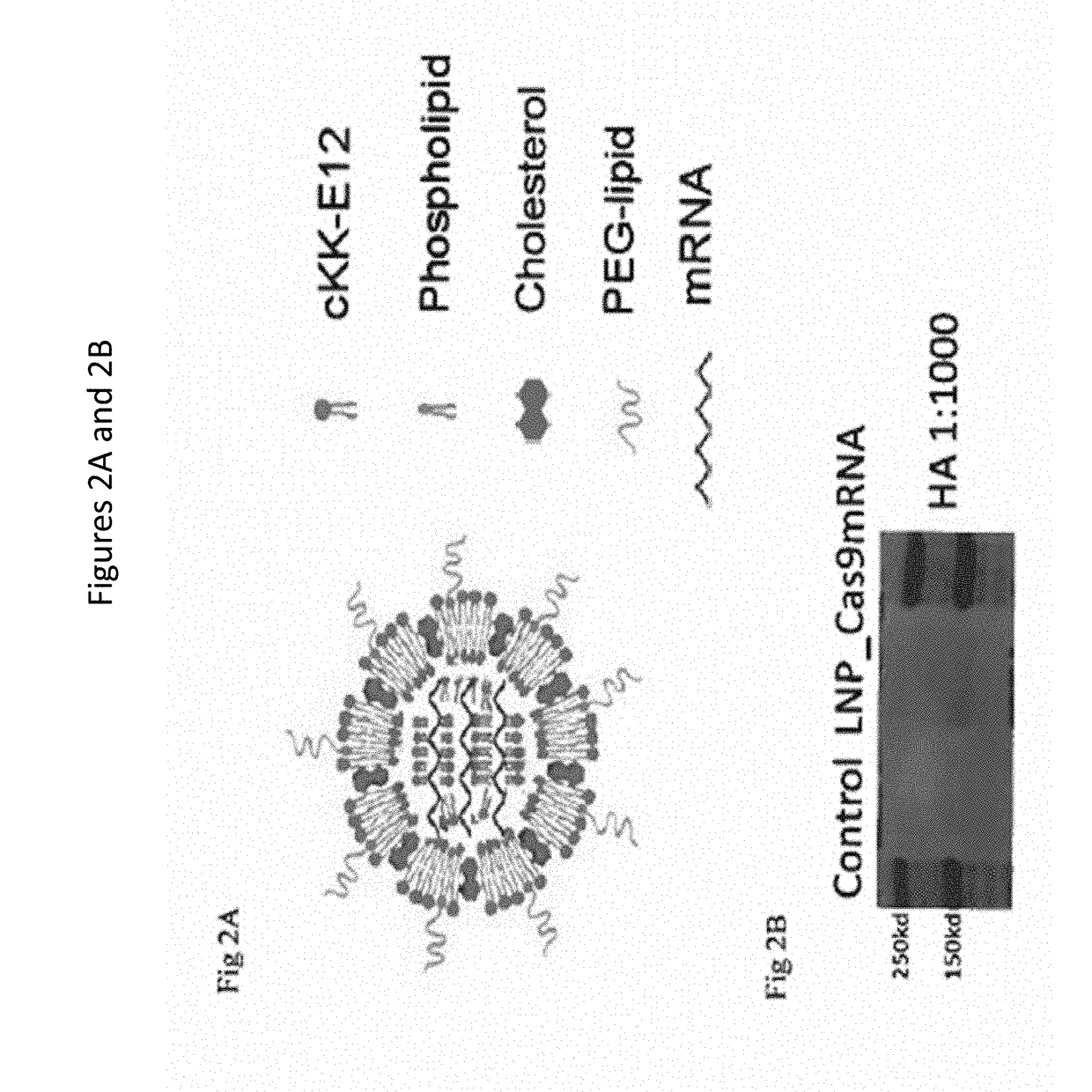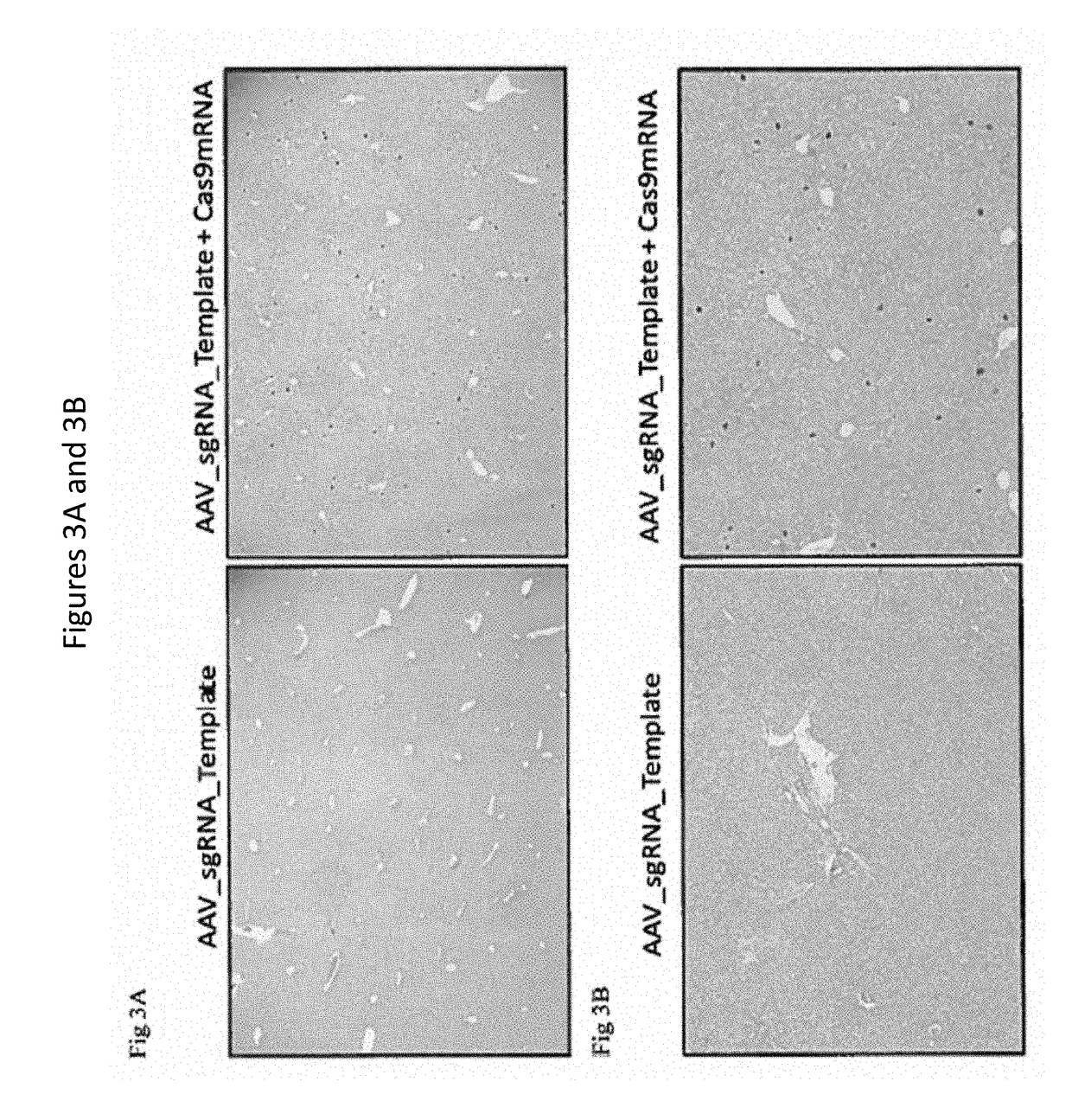Method for gene editing
a gene editing and gene technology, applied in the field of gene editing tools, to achieve the effect of efficient in vivo gene editing
- Summary
- Abstract
- Description
- Claims
- Application Information
AI Technical Summary
Benefits of technology
Problems solved by technology
Method used
Image
Examples
example 1
Correction of Gene Defect by Two Delivery Vehicles
[0128]The type II bacterial clustered, regularly interspaced, palindromic repeats (CRISPR)-associated (Cas) system has been engineered into a powerful genome editing tool consisting of the Cas9 nuclease and a single gRNA (sgRNA). The sgRNA targets Cas-9 to genomic regions that are complementary to the 20-nucleotide target region of the sgRNA and that contain a 5′-NGG-3′ protospacer-adjacent motif (PAM). Double-stranded DNA breaks generated by Cas9 at target loci are repaired by non-homologous end-joining or homology-directed repair (HDR). We have demonstrated CRISPR-Cas9-mediated correction of a Fumarylacetoacetate hydrolase (Fah) mutation in hepatocytes in a mouse model of the human disease hereditary tyrosinemia. Delivery of components of the CRISPR-Cas9 system by hydrodynamic injection resulted in initial expression of the wild-type FAH protein in ˜1 / 250 liver cells. Expansion of FAH-positive hepatocytes rescued the body weight lo...
example 2
[0134]An in vitro testing system for the gene editing system described in Example 1 was established. An sgRNA targeting EGFP was expressed in HEK293T cells, which overexpress EGFP. Cas9 mRNA-LNP was added to the cells in vitro and EGFP expression was assessed by flow cytometry. The results of the study are provided in FIG. 4. Untreated HEK293T cells expressing the EGFP-targeting sgRNA expressed high levels of EGFP (left panel). When MD-1-Cas9mRNA or C12-200-Cas9mRNA were added to the HEK293T cells (center panel or right panel, respectively), EGFP expression was knocked down in over 45% of the cells.
[0135]Thus, the study indicated that in vitro delivery of Cas9 via a non-viral vector such as a lipid nanoparticle to cells expressing a sgRNA results in robust reduction of expression of the nucleic acid targeted by the sgRNA.
example 3
[0136]Studies were conducted to optimize the sgRNAs in the FAH mouse model system. Mutations were detected using a Surveyor assay, and the results of the studies are provided in FIGS. 5-7. The surveyor assay is a robust method to detect mutations and polymorphisms in DNA. Suveryor nuclease recognizes and cleaves all types of mismatches arising from the presence of single nucleotide polymorphisms or from small insertions or deletions. Surveyor assay is based on the generation of PCR products that are subsequently hybridized to generate mismatches in heteroduplexed DNA, which is then treated and cleaved by Surveyor nuclease. Size based fragmentation analysis is performed to detect cleaved DNA.
[0137]FIG. 5 provides the selection of the most potent sgRNA in an in vitro system. In this system, mouse embryonic fibroblasts were isolated from FAH mice and immobilized by shRNA P53; transfection efficiency was increased by overexpression of mutated Ras gene. The system reached more than 90% t...
PUM
| Property | Measurement | Unit |
|---|---|---|
| size | aaaaa | aaaaa |
| size | aaaaa | aaaaa |
| size | aaaaa | aaaaa |
Abstract
Description
Claims
Application Information
 Login to View More
Login to View More - R&D
- Intellectual Property
- Life Sciences
- Materials
- Tech Scout
- Unparalleled Data Quality
- Higher Quality Content
- 60% Fewer Hallucinations
Browse by: Latest US Patents, China's latest patents, Technical Efficacy Thesaurus, Application Domain, Technology Topic, Popular Technical Reports.
© 2025 PatSnap. All rights reserved.Legal|Privacy policy|Modern Slavery Act Transparency Statement|Sitemap|About US| Contact US: help@patsnap.com



